Gunter Van Craen - CDIO at Bekaert - Embracing Digital Transformation
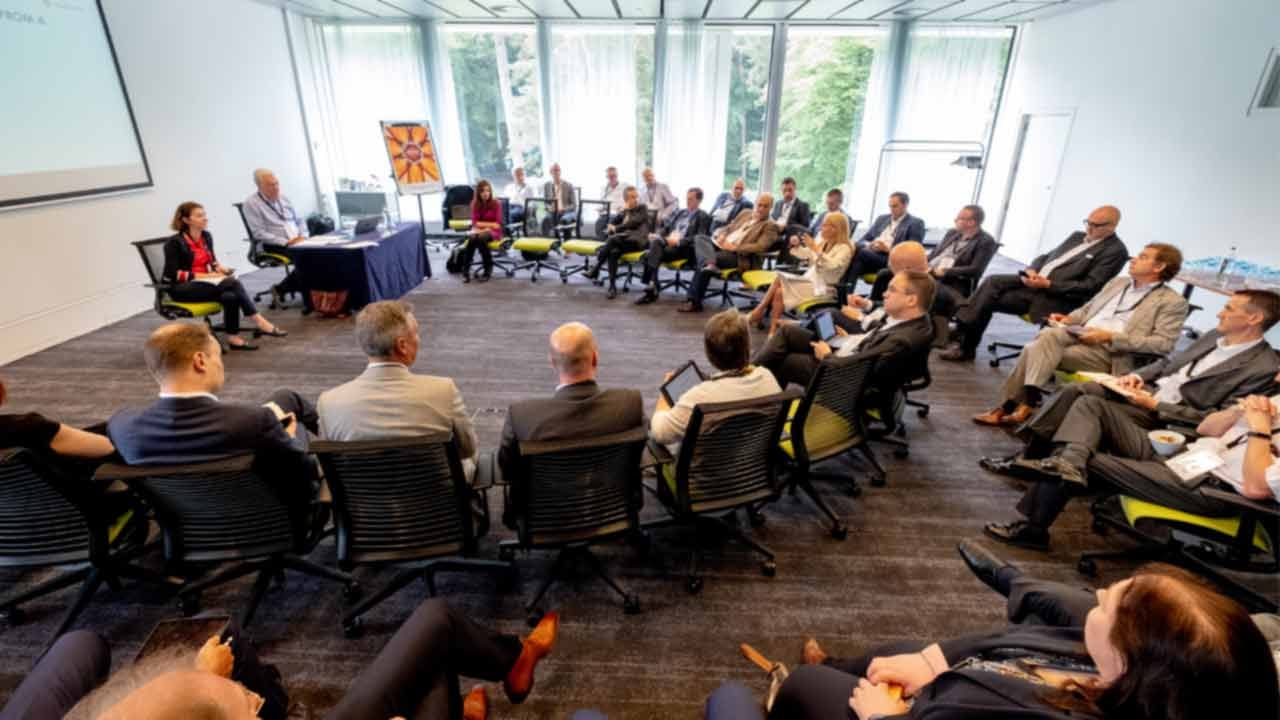
Find out more:
.png)
Poland 5-12-25 Invitation Only Physical Polish
Liderzy biznesowi pokładają ogromne nadzieje w agentach AI, widząc w nich szansę na zbudowanie przewagi konkurencyjnej. Rzadko jednak pada zasadnicze pytanie: czy cyfrowy fundament organizacji – dane, integracje, systemy – jest na to gotowy? Czy obecna strategia integracji wspiera ambicje biznesowe, czy je spowalnia? Podczas naszego biznesowego śniadania CIONET, organizowanego we współpracy z Digia (Finlandia) i Savangard, przyjrzymy się trendom, które dziś definiują architekturę i integracje w Europie i w Polsce. W gronie ok. 20 liderów IT porozmawiamy m.in. o tym: Czy strategia integracji danych i aplikacji powinna uwzględniać przyszłe zastosowania AI? Jak przekształcić kluczowe dane w powtarzalne „data products”, które przyspieszają dostarczanie wartości biznesowej? W jakim kierunku ewoluują platformy integracyjne – iPaaS i API Management? Cloudification - jakie lekcje wynoszą firmy, które przeszły takie transformacje z legacy do nowoczesnej integracji w chmurze? Jak zorganizować „integration core team”, który wzmacnia rozproszone i coraz bardziej niezależne zespoły technologiczne? Spotkanie odbędzie się w kameralnej atmosferze Centrum Praskiego Koneser (CHPTR) i będzie prowadzone w formule dyskusyjnej – z myślą o praktykach zajmujących się modernizacją architektury, integracją systemów i przygotowaniem IT na kolejne lata.
Read More.png)
Poland 8-12-25 Invitation Only Physical Polish
W wielu firmach monitoring wydaje się działać poprawnie, dopóki nie spojrzymy na to, czego nie widać: luki między narzędziami, brak wspólnego obrazu usług, opóźnienia między zdarzeniem a decyzją. W takiej sytuacji trudno wcześnie wykryć degradację, oszacować wpływ incydentów na klientów czy przewidzieć ryzyka, które uderzają w biznes, zanim IT zdąży zareagować. Podczas CIONET Executive Roundtable, którego partnerem jest Spluk, porozmawiamy o tym, ile organizacje tracą na rozproszonym monitoringu i jak wiele można zyskać, gdy staje się on spójnym systemem, a nie zbiorem narzędzi. Zastanowimy się, jak połączyć dane z aplikacji, infrastruktury i biznesu w jeden obraz, który realnie wspiera szybkość reakcji, stabilność usług i jakość decyzji.
Read More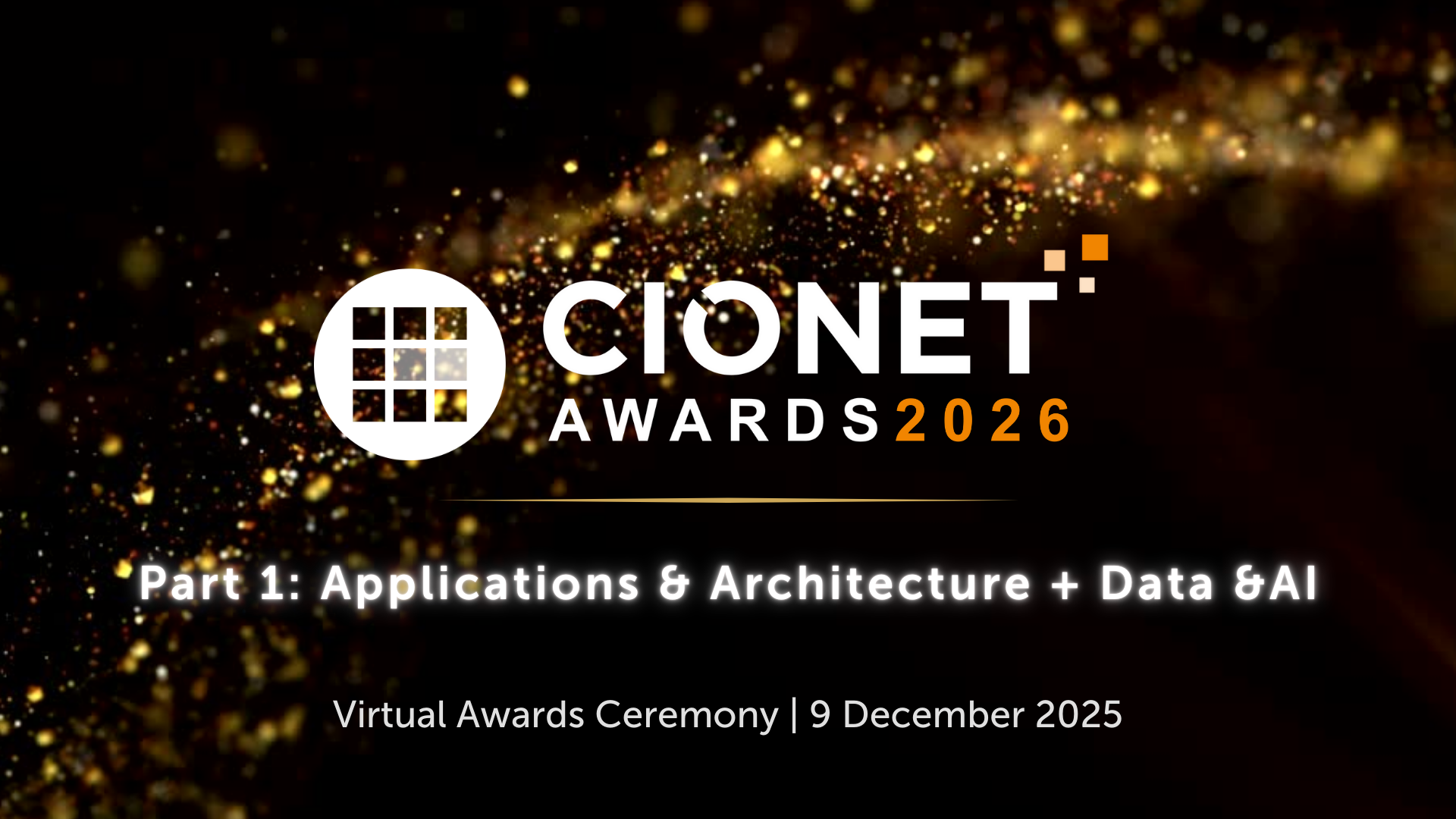
International 9-12-25 Public Virtual english
The CIONET Awards 2026: Part 1, the premier celebration of excellence in digital mission and leadership. During this event the spotlight falls on two of the most critical arenas in modern enterprise: Applications & Architecture and Data & AI. Prepare for a dynamic session where each nominee will present their groundbreaking achievements.
Read More.png)
Brazil 9-12-25 Country Members Physical portuguese
Cerimônia de Premiação CIONET BRASIL 2025.Reconheceremos as Empresas Líderes em Excelência Tecnológica em Projetos e os Líderes Digitais do Ano 2025.Quando?09 de Dezembro de 2025A partir das 18:30Onde?Sheraton São Paulo WTC HotelInscrições online: https://www.cionet.com/pt-br/events/pr%C3%AAmios-cionet-brasil-2025
Read More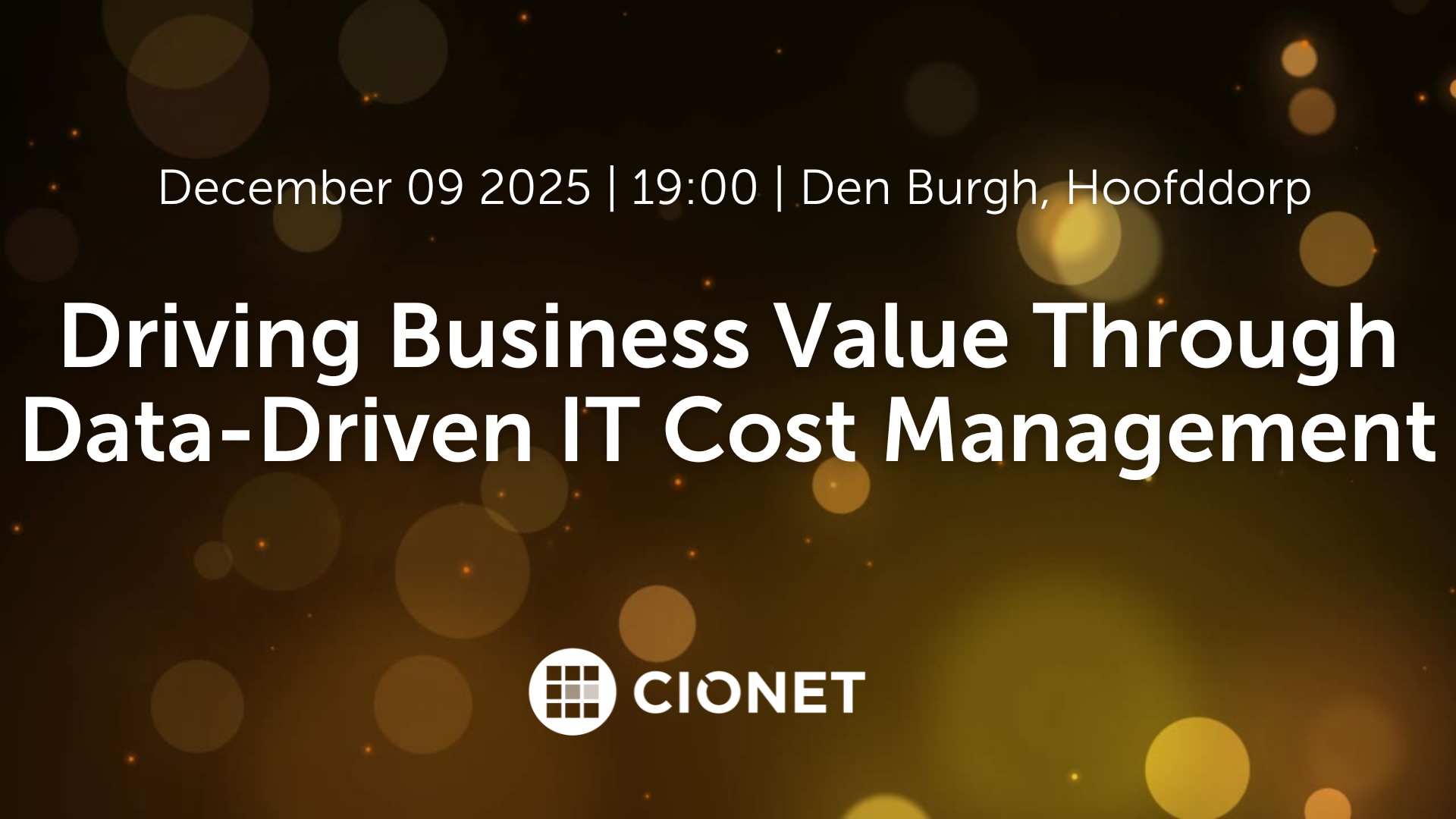
Netherlands 9-12-25 Invitation Only english
At this exclusive CIONET Executive Roundtable, hosted in partnership with It’s Value, we will explore how Technology Business Management (TBM) principles can help CIOs and IT leaders make data-driven financial decisions that drive measurable business value.
Read MoreNetherlands 9-12-25 Invitation Only Physical english
Digital transformation and ongoing economic uncertainty are intensifying the pressure on IT leaders to do more with less. In this environment, gaining precise control over IT costs—while continuing to deliver effective, efficient, and innovative technology operations—is more critical than ever. At this exclusive CIONET Executive Roundtable, hosted in partnership with It’s Value, we will explore how Technology Business Management (TBM) principles can help CIOs and IT leaders make data-driven financial decisions that drive measurable business value. Key Discussion Themes Turning data insights into smarter IT investment decisions Setting priorities for cost optimisation and maximising ROI Quantifying and communicating the business value of IT initiatives Evaluating the principles of FinOps and the implications of public, private, and hybrid cloud environments for cost management Embedding effective change management to drive adoption and alignment Achieving tangible business outcomes from AI initiatives while maintaining fiscal discipline The evening will also feature a fireside chat with Sunil Anand, Global Head of Technology Business Management at National Grid. Sunil will share practical lessons and key milestones, retracing the National Grid cost management journey. This dinner offers a unique opportunity to: Exchange experiences with peers facing similar challenges Gain insights from TBM experts and industry practitioners Reassess your own IT financial strategy in a relaxed, collegial setting Join us for an evening of insight, discussion, and connection—designed to help you strengthen IT’s role as a true business value driver.
Read More.jpg)
Belgium Dec 4, 2025 Invitation Only Physical english
CIONET is committed to highlighting and celebrating female role models in IT, Tech & Digital, creating a leadership programme that empowers and elevates women within the tech industry. This initiative is dedicated to showcasing the achievements and successes of leading women, fostering an environment where female role models are recognised, and their contributions can ignite progress and inspire the next generation of women in IT.
Read More.png)
International Dec 9, 2025 Public Virtual english
The CIONET Awards 2026: Part 1, the premier celebration of excellence in digital mission and leadership. During this event the spotlight falls on two of the most critical arenas in modern enterprise: Applications & Architecture and Data & AI. Prepare for a dynamic session where each nominee will present their groundbreaking achievements.
Read More
Netherlands Dec 9, 2025 Invitation Only Physical english
Digital transformation and ongoing economic uncertainty are intensifying the pressure on IT leaders to do more with less. In this environment, gaining precise control over IT costs—while continuing to deliver effective, efficient, and innovative technology operations—is more critical than ever. At this exclusive CIONET Executive Roundtable, hosted in partnership with It’s Value, we will explore how Technology Business Management (TBM) principles can help CIOs and IT leaders make data-driven financial decisions that drive measurable business value. Key Discussion Themes Turning data insights into smarter IT investment decisions Setting priorities for cost optimisation and maximising ROI Quantifying and communicating the business value of IT initiatives Evaluating the principles of FinOps and the implications of public, private, and hybrid cloud environments for cost management Embedding effective change management to drive adoption and alignment Achieving tangible business outcomes from AI initiatives while maintaining fiscal discipline The evening will also feature a fireside chat with Sunil Anand, Global Head of Technology Business Management at National Grid. Sunil will share practical lessons and key milestones, retracing the National Grid cost management journey. This dinner offers a unique opportunity to: Exchange experiences with peers facing similar challenges Gain insights from TBM experts and industry practitioners Reassess your own IT financial strategy in a relaxed, collegial setting Join us for an evening of insight, discussion, and connection—designed to help you strengthen IT’s role as a true business value driver.
Read More.jpg)
Italy Dec 10, 2025 Invitation Only Physical italian
Questa roundtable esclusiva offrirà a CIO, CISO e Leader di ITOps/Engineering un confronto diretto per individuare le migliori strategie di Innovazione che, attraverso l'observability, ottimizzino il Return of Investment.
Read More.jpg)
Belgium Dec 11, 2025 Country Members Physical english
Imagine being able to monitor, simulate, and optimise an entire city, factory, or supply chain in real time. Next-generation digital twins are making this vision a reality, transforming how we manage and understand complex systems. By creating dynamic virtual replicas of physical assets and processes, digital twins allow organisations to predict issues, optimize performance, and make data-driven decisions with unprecedented accuracy.This event will explore how digital twins are being used across industries to revolutionize the way we operate and maintain large-scale, intricate systems—whether it’s the infrastructure of a smart city, the efficiency of a factory floor, or the resilience of global supply chains.Examples of Digital Twins in Action:Smart Cities: Urban planners can use digital twins to simulate traffic flow, monitor energy usage, or predict the impact of weather events on infrastructure. This enables cities to optimize resources and improve the quality of life for their citizens.Factories of the Future: Manufacturing plants are leveraging digital twins to monitor equipment in real time, prevent downtime, and optimize production lines. With predictive analytics, factories can avoid costly breakdowns and improve overall efficiency.Supply Chain Management: Complex supply chains, spanning continents and industries, can be modeled as digital twins to track shipments, simulate disruptions, and optimize logistics. Businesses can reduce inefficiencies and respond faster to market demands.Key Themes:Real-Time Monitoring and Simulation: How digital twins provide real-time insights into complex systems, allowing for dynamic response and optimization.Predictive Power: Leveraging AI and data analytics, digital twins help organisations predict and mitigate issues before they happen, from equipment failures to supply chain bottlenecks.Scalability Across Ecosystems: Digital twins aren’t limited to individual assets—learn how they can be scaled across entire ecosystems like smart cities or global supply chains for maximum impact.Building Trust and Security: With digital twins handling critical infrastructure and sensitive data, what are the security and governance frameworks needed to ensure trust in these virtual systems?Why You Should Attend:Next-generation digital twins are no longer just a concept—they are revolutionizing industries by offering a new way to manage complexity. Whether you’re looking to optimize a city, factory, or supply chain, this event will provide practical insights into how digital twins can transform your organisation’s operations and drive future innovation.
Read More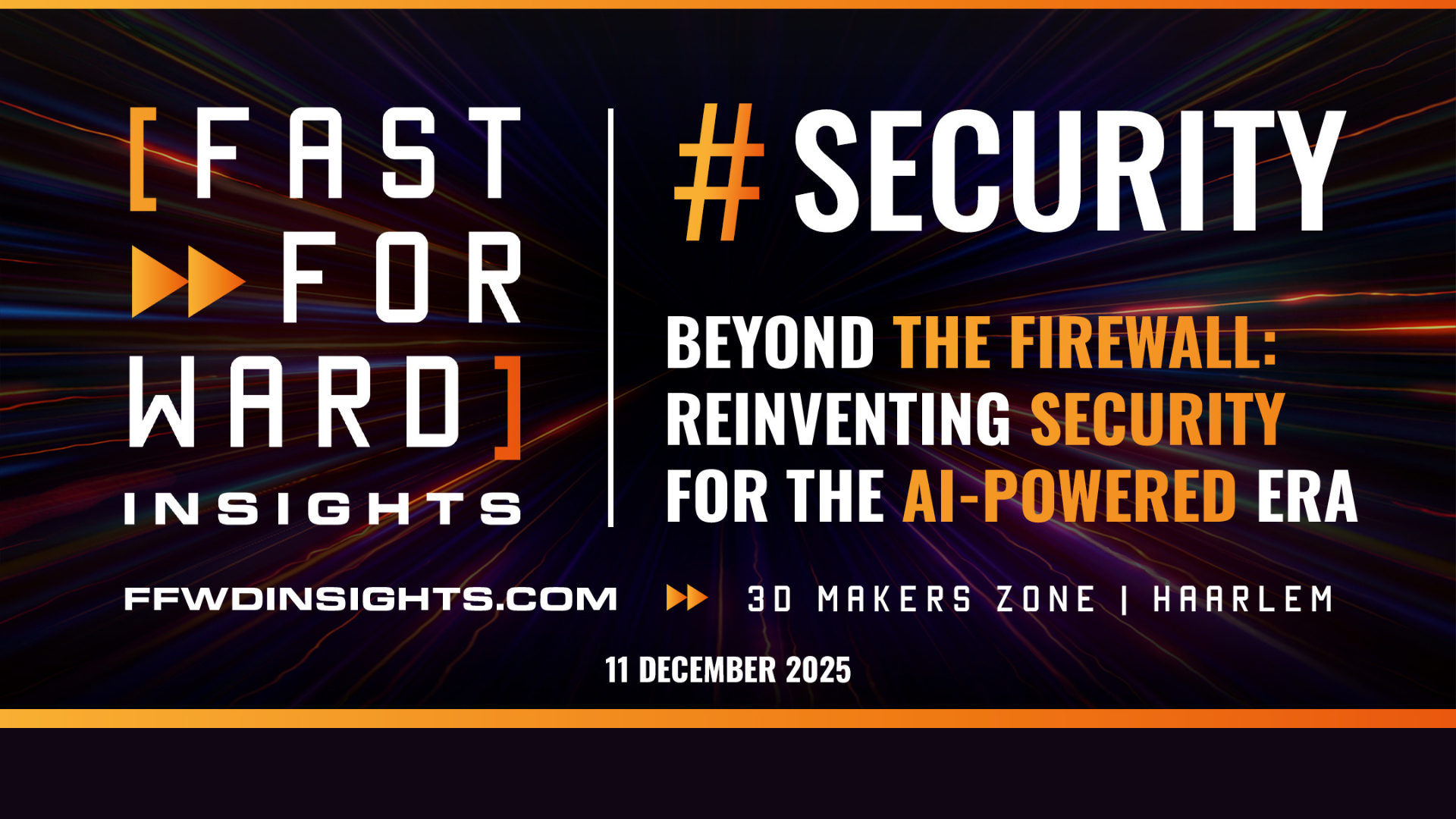
Netherlands Dec 11, 2025 Invitation Only Physical dutch
Navigating tommorrow's threatscape: Cybersecurity insights for digital leaders. Op 28 november in de 3D Makers Zone in Haarlem.
Read More.jpg)
Belgium Dec 4, 2025 Invitation Only Physical english
CIONET is committed to highlighting and celebrating female role models in IT, Tech & Digital, creating a leadership programme that empowers and elevates women within the tech industry. This initiative is dedicated to showcasing the achievements and successes of leading women, fostering an environment where female role models are recognised, and their contributions can ignite progress and inspire the next generation of women in IT.
Read More.png)
International Dec 9, 2025 Public Virtual english
The CIONET Awards 2026: Part 1, the premier celebration of excellence in digital mission and leadership. During this event the spotlight falls on two of the most critical arenas in modern enterprise: Applications & Architecture and Data & AI. Prepare for a dynamic session where each nominee will present their groundbreaking achievements.
Read More
Netherlands Dec 9, 2025 Invitation Only Physical english
Digital transformation and ongoing economic uncertainty are intensifying the pressure on IT leaders to do more with less. In this environment, gaining precise control over IT costs—while continuing to deliver effective, efficient, and innovative technology operations—is more critical than ever. At this exclusive CIONET Executive Roundtable, hosted in partnership with It’s Value, we will explore how Technology Business Management (TBM) principles can help CIOs and IT leaders make data-driven financial decisions that drive measurable business value. Key Discussion Themes Turning data insights into smarter IT investment decisions Setting priorities for cost optimisation and maximising ROI Quantifying and communicating the business value of IT initiatives Evaluating the principles of FinOps and the implications of public, private, and hybrid cloud environments for cost management Embedding effective change management to drive adoption and alignment Achieving tangible business outcomes from AI initiatives while maintaining fiscal discipline The evening will also feature a fireside chat with Sunil Anand, Global Head of Technology Business Management at National Grid. Sunil will share practical lessons and key milestones, retracing the National Grid cost management journey. This dinner offers a unique opportunity to: Exchange experiences with peers facing similar challenges Gain insights from TBM experts and industry practitioners Reassess your own IT financial strategy in a relaxed, collegial setting Join us for an evening of insight, discussion, and connection—designed to help you strengthen IT’s role as a true business value driver.
Read More.jpg)
Italy Dec 10, 2025 Invitation Only Physical italian
Questa roundtable esclusiva offrirà a CIO, CISO e Leader di ITOps/Engineering un confronto diretto per individuare le migliori strategie di Innovazione che, attraverso l'observability, ottimizzino il Return of Investment.
Read More.jpg)
Belgium Dec 11, 2025 Country Members Physical english
Imagine being able to monitor, simulate, and optimise an entire city, factory, or supply chain in real time. Next-generation digital twins are making this vision a reality, transforming how we manage and understand complex systems. By creating dynamic virtual replicas of physical assets and processes, digital twins allow organisations to predict issues, optimize performance, and make data-driven decisions with unprecedented accuracy.This event will explore how digital twins are being used across industries to revolutionize the way we operate and maintain large-scale, intricate systems—whether it’s the infrastructure of a smart city, the efficiency of a factory floor, or the resilience of global supply chains.Examples of Digital Twins in Action:Smart Cities: Urban planners can use digital twins to simulate traffic flow, monitor energy usage, or predict the impact of weather events on infrastructure. This enables cities to optimize resources and improve the quality of life for their citizens.Factories of the Future: Manufacturing plants are leveraging digital twins to monitor equipment in real time, prevent downtime, and optimize production lines. With predictive analytics, factories can avoid costly breakdowns and improve overall efficiency.Supply Chain Management: Complex supply chains, spanning continents and industries, can be modeled as digital twins to track shipments, simulate disruptions, and optimize logistics. Businesses can reduce inefficiencies and respond faster to market demands.Key Themes:Real-Time Monitoring and Simulation: How digital twins provide real-time insights into complex systems, allowing for dynamic response and optimization.Predictive Power: Leveraging AI and data analytics, digital twins help organisations predict and mitigate issues before they happen, from equipment failures to supply chain bottlenecks.Scalability Across Ecosystems: Digital twins aren’t limited to individual assets—learn how they can be scaled across entire ecosystems like smart cities or global supply chains for maximum impact.Building Trust and Security: With digital twins handling critical infrastructure and sensitive data, what are the security and governance frameworks needed to ensure trust in these virtual systems?Why You Should Attend:Next-generation digital twins are no longer just a concept—they are revolutionizing industries by offering a new way to manage complexity. Whether you’re looking to optimize a city, factory, or supply chain, this event will provide practical insights into how digital twins can transform your organisation’s operations and drive future innovation.
Read More
Netherlands Dec 11, 2025 Invitation Only Physical dutch
Navigating tommorrow's threatscape: Cybersecurity insights for digital leaders. Op 28 november in de 3D Makers Zone in Haarlem.
Read MoreThe City of Rotterdam Empowers Development at Scale
Delivering a hundred applications in any business environment is no small feat. Delivering over 100 applications in the public sector in less than 4 years to improve the lives of over half a million people sounds even more aspirational. However, this is exactly what Gemeente Rotterdam (the City of Rotterdam), has been able to achieve since adopting low-code in 2018.
Delivering a hundred applications in any business environment is no small feat. Delivering over 100 applications in the public sector in less than 4 years to improve the lives of over half a million people sounds even more aspirational.
However, this is exactly what Gemeente Rotterdam (the City of Rotterdam), has been able to achieve since adopting low-code in 2018. Rotterdam, home to beautiful architectural spectacles like the Erasmus Bridge and a bustling population of 660,000 citizens, was facing similar delivery challenges as other municipalities in the last decade:
Serving the City of Rotterdam from a technological perspective requires handling an innate amount of complexity at scale.
CIO, Mark Vermeer, said, “An organization like the City of Rotterdam is comprised of maybe 30 product lines – we have traffic lights, an engineering department, parking tickets, and public health. We have around 800 IT systems in place to support all of that, and we have a portfolio of easily about 100 projects in IT alone at any given moment in time.”
The City’s motto “Make it happen” appeared to be in stark contrast to the way digital solutions were being delivered for employees, partners, and the public at the time.
Rapid Application Development (RAD) Mendix Advisor for the City, Erik van der Steen, has been at the helm of Rotterdam’s low-code initiative since its start in 2018.
“We had a software development department with Java and .NET developers, but they were very reluctant to start new things. Whenever a department asked ‘can you make this for us,’ it was always, ‘yes, in a year’s time we’ll have room for you, and it will cost you €300,000.’ They discouraged taking on new applications,” he said.
“What we saw was that various departments would go to an outside agency. That was becoming the trend, and from our point of view in the Information Management department, that was very undesirable because there were major considerations around who owns the data and security measures. The business didn’t care – they just wanted an application that did what they wanted it to do.”
Van der Steen and his team made the decision to adopt the Mendix development platform to start delivering solutions more quickly and better manage the inherent complexity that comes with hundreds of thousands of users and an enterprise level of services.
What became a true differentiator in jumpstarting their success was the partnership between Mendix and the City of Rotterdam. Beyond offering a platform, Mendix was able to provide a proven framework for low-code implementation that the Information Management (IM) team could readily adhere to.
Paramount to growing a low-code digital execution practice, beyond choosing a platform, is identifying the processes for sustainable development, prioritizing requirements in a portfolio of projects, and enlisting the right people to execute.
Reaching a tipping point, the IM team didn’t wait any longer to get going. They decided to adopt an agile mindset with the resources available to get their development off the ground.
“The main focus was that we wanted to bring speed into our development.”
— ERIK VAN DER STEEN / RAPID APPLICATION DEVELOPMENT (RAD) MENDIX ADVISOR
“And we could do that by working Agile Scrum… Agile was sort of going around at the time along with Lean, so we thought ‘this looks like it could work, let’s just start.’ And with limited knowledge of what Agile was, we kicked off certain projects, also helped by Mendix partners who had more experience with agile and user stories and sprint planning,” says Erik van der Steen.
“We [leveraged] the digital execution program that Mendix developed, with Start, Structure, and Scale. We were very aware of that we were in the ‘Start’ phase so we shouldn’t overextend ourselves, and started with little steps,” Erik van der Steen continued.
The newly-formed RAD team was thoughtful in the selection of their first projects, deciding on:
You can argue that the most critical ingredient to their success is the culture of the City’s Information Management team. The trend that starts to crystallize is that these employees saw something that wasn’t working and decided to fix it without being afraid of failure and learning as they go.
RAD Solution Architect, Leon Schipper, reflects on the program beginnings. “As a small team, we were able to grow without being formed by management… We basically started from bottom up and that gave us a lot of freedom.”
Erik van der Steen credits a lot of the program’s early success to his ability to hire the right people and empower them, quickly.
“In the last couple years, I was constantly able to hire more people to start applications. If we couldn’t have hired so many people, then we would have had a lot less applications. And I think because we had the idea to make generic modules and implement quality assurance on what we published, that helped us to make with speed.”
Expanding on the early success with Mendix, the City’s CIO, Mark Vermeer, said, “We have a really diversified portfolio, so first, we prefer to buy stuff rather than make it if we can. If we are going to make it, then we’d look at Java.”
To avoid falling into the same trap of a mounting backlog of project requests, the team has put parameters in place to ensure that solution delivery is quick and accurate most every time.
“What Mendix gave us was a fast track for development of the smaller demands, or the things that can be done in an agile way with rapid prototyping.”
— MARK VERMEER / CIO
“That gave the IT team room to deal with new releases of Oracle EBS systems, our really large social security system, or our tax system. The projects our development line was meant for were bogged down by the high demand for digitalization – everyone wants apps – and that’s where we started [with Mendix],” he added.
To avoid falling into the same trap of a mounting backlog of project requests, the team has put parameters in place to ensure that solution delivery is quick and accurate most every time.
Over time, the City’s RAD team has grown to include several stakeholders who are critical during request intake. Today, any requests from the business are first fielded by Solution Architects, who determine if low-code is the right means of development. If so, the SCRUM masters ensure that the right level of detail has been provided upfront so that the project will be a successful collaboration.
“We have a supply and demand process, and every question from the business should go through that process,” says Erik van der Steen.
“In that process, we decide what kind of technique we will use to solve the problem.”
— ERIK VAN DER STEEN / RAPID APPLICATION DEVELOPMENT (RAD) MENDIX ADVISOR
“The business stakeholders are there from the start, and once we decide that we are going to make the application, we identify the product owner who brings the budget and coach them to make sure they have people with the right knowledge on board. We put a lot of responsibility on them to make sure that the right participants are involved in the project,” he added.
Solution Architects like Leon Schipper are often the first layer of decision-making when it comes to matching solution requirements with the right tool. “Mostly everything can be built with Mendix,” says Leon Schipper,
“But that being said, that’s not our goal. We first try to reuse systems we already have in place, then we like to buy in the market, and last is if we say ‘okay, let’s make it.’ Then we have different make lines for different domains. For instance, if we are saying that it should be built for native, then we can make it easily with Mendix. Also, process supporting software is an easy way to go because you have many interactions, and [Mendix] can be the glue between all the stuff we have.”
Once an application is determined to be the proper fit for Mendix, the development process begins.
“We make great use of the SCRUM masters,” says RAD Coordinator, Marja van der Veer. “They help us a lot in defining when we are ready to build an app… [they] look at the user stories, see if they’re complete enough, and do a lot of the refinement upfront.”
The team at Rotterdam has found a great deal of efficiency by identifying what is more often similar in the projects brought to them, as opposed to what is different.”
“There’s one application that I am particularly proud of,” Erik van der Steen recalls. “We got a request from three different departments to create similar applications to administer training and certifications for staff.
“We were able to get the three of them together and unify their demand so that we only had to make one application that three departments can now use. It’s something that rarely happens in Rotterdam, because every problem often gets its own system.”
The team has also invested in building out a library of reusable modules, components, and templates so that applications don’t always need to start from scratch and can be democratized to other individuals.
Some of these include:
“We’ve developed a lot of generic modules, like for our state benefits system,” says Marja van der Veer. “All the interfaces with other systems can be more or less generic. For instance, we have an enormous amount of application forms and they’re basically the same – we ask for the same information like your name, BSN (BurgerServiceNumber), or address.”
“In templatizing forms, we can really speed things up.”
— MARJA VAN DER VEER / RAPID APPLICATION DEVELOPMENT (RAD) COORDINATOR
Instead of fighting shadow IT, the RAD team has used low-code to harness the enthusiasm and talent of their business counterparts into a growing citizen development program in one of our business units.
Related to the investment in reusable components, Erik van der Steen sees this as an optimal way to deliver solutions at the speed required over time.
“We are training them and creating generic building blocks for them, so they are creating applications that otherwise we as RAD team probably would have been making. In that sense, they take away a little bit of our work, which isn’t a bad thing… [Our] hopes are that people will get more and more enthusiastic, and that business units see the added value of having your own people making apps for your own people.
“In the end, there could be small groups of full-time Mendix developers working on apps for each business unit, and I think that is a viable way to go forward.”
“One other business unit started with us when we adopted Mendix, because they were developing in MS Access and were forbidden by the IT department to do that anymore. They learned they were going to use Mendix instead, and they said ‘well, this is something we can use.’ One guy from the department did a Mendix course and started his first app.
“That was so successful that he got two other colleagues enthusiastic about it, and now they are making their own apps for our City Engineers department. We have contributed to some of the things they are doing by making generic modules and interfaces available, but they are making very technical things.”
Internal applications initially comprised the majority of Rotterdam’s portfolio. Over time, employees saw more opportunities to leverage these consistent, digital interfaces to improve departmental interactions with citizens across services from trash removal to parking.
“We started with internal process improvement applications, but quite quickly we received requests to make solutions that were public-facing for external users. We also make some applications for cooperation with partners outside of the city, where we can digitize a process even outside of our own municipality.”
“Overall, we have about 40% of our solutions for the public and 60% for internal process improvements, such as replacing paper-based processes or older applications.”
— ERIK VAN DER STEEN / RAPID APPLICATION DEVELOPMENT (RAD) MENDIX ADVISOR
Over the last four years, some key solutions delivered by the RAD team include:
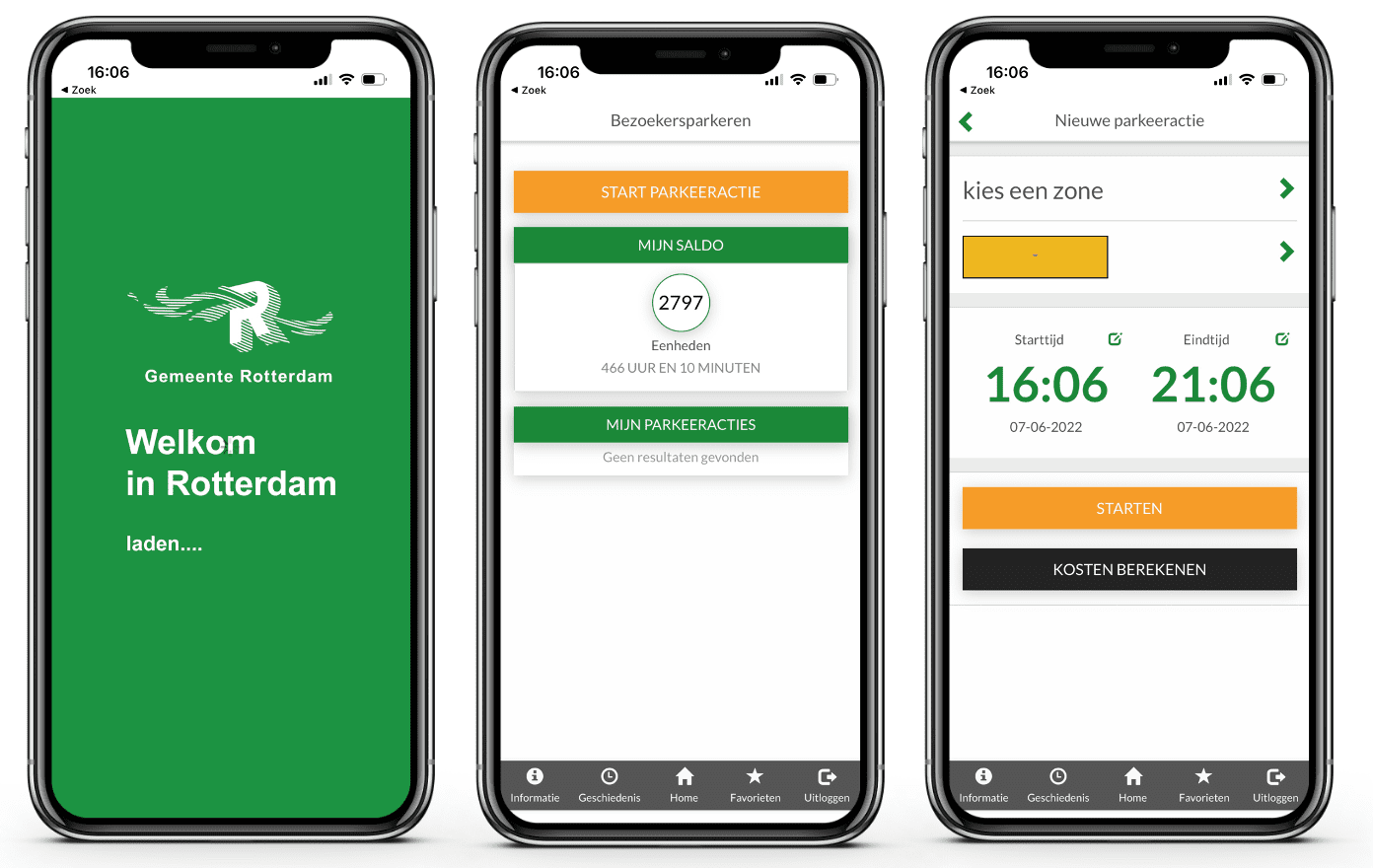 The RBP application allows visitors in Rotterdam to easily reserve parking spaces with their mobile phone.
The RBP application allows visitors in Rotterdam to easily reserve parking spaces with their mobile phone.
The City’s RAD team can unanimously pinpoint what they are most proud of in their portfolio to date: being able to deliver quick enough to help citizens when they need it most. With the onset of COVID-19 in early 2020, the City’s in-person services were rendered ineffective.
“We made a lot of forms for people to receive benefit payments or an allowance,” recalled Marja van der Veer. “We developed a digital service counter, so instead of going to the city hall, you could do everything over video. I think we should be the most proud of this because it showed that Mendix could help so much in a crisis, because we could develop this so fast.”
One component of the Digital Counter, which allows citizens to confirm their identity over a video call with their passports incorporated Mendix-built APIs on top of an existing video call platform.
The merging of these technologies was delivered in just 3 weeks. The Digital Counter is still in use in Rotterdam today and has supported with thousands of citizen calls, winning both a Gemeente Delers Award and Computable Award in 2021.
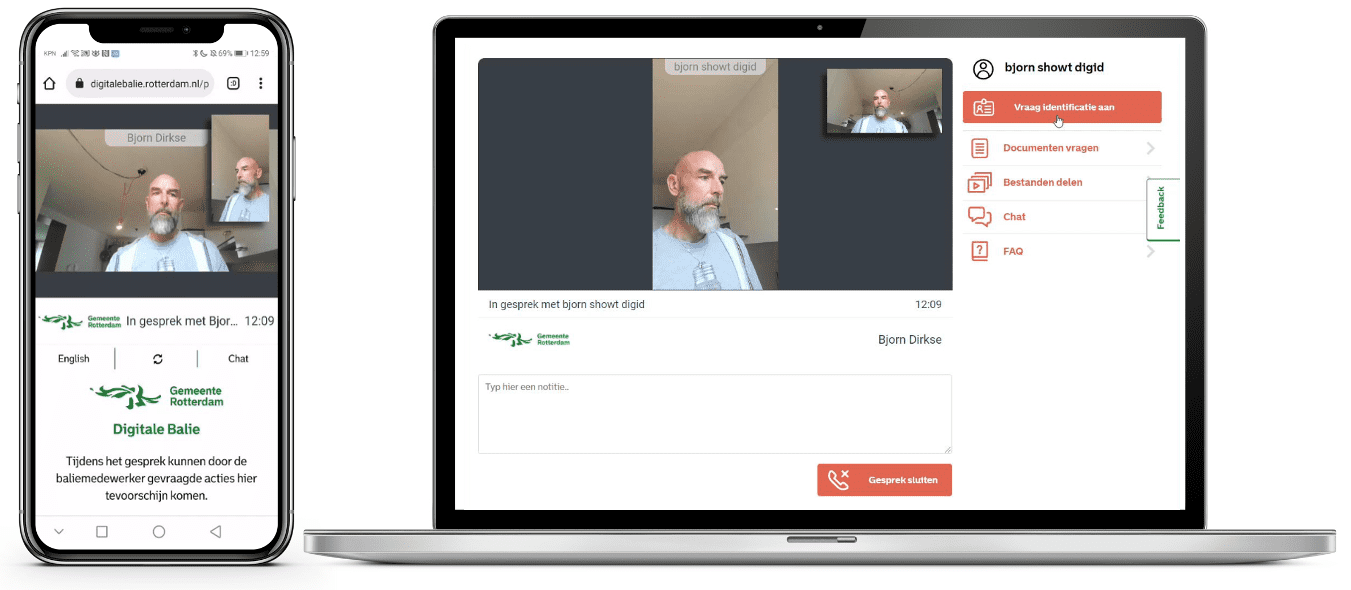 The Digital Counter application enables citizens to engage with city departments through their phone or desktop over video instead of in-person, a critical point of engagement during COVID-19 and beyond.
The Digital Counter application enables citizens to engage with city departments through their phone or desktop over video instead of in-person, a critical point of engagement during COVID-19 and beyond.
“I think that also goes for the support of the people who were in the supplement affair,” added Erik van der Steen.
“The tax office disadvantaged a lot of people who received a supplement to pay for childcare. They were accused of fraud and had to pay back a lot of money. The tax office was going to compensate these citizens and Rotterdam needed to support these people, so we created an application in a couple of weeks to do that.”
“We also created an application in four weeks with Mendix to manage the distribution of funds to the less fortunate in Rotterdam because of the high prices for energy.”
“We couldn’t have done that in the past. In crisis situations, creating something quickly that is robust enough to be used by citizens and our internal people – that is very, very helpful.”
— ERIK VAN DER STEEN / RAPID APPLICATION DEVELOPMENT (RAD) MENDIX ADVISOR
The City doesn’t rely just on their own opinions to measure the success of solutions. The public are very much a part of the feedback process when a new solution is delivered by the City’s RAD team.
“For most applications that we make for the public, we ask if it works for them. Sometimes we also make them part of the development process by letting them see, in screenshots or wireframes, what we are trying to make and asking if it’s something they would like. We have more than one group of people who are willing to participate in these engagements,” Leon Schipper said.
Additionally, the Rotterdam team is making services for all.
“We have a new UX and UI library from our communications department which is used for digital solutions. This is the first time we’re doing this. We are also making it on Atlas 3 to reuse what is designed,” Schipper added.
“We also comply with the WCAG guidelines, industry best practices, and relevant accessibility legislation. We have one application that we’re prototyping and want everyone to be on board, so for example we are getting user feedback from blind citizens.”
Rotterdam has proven to be a model city for aligning and empowering the right people, processes, and portfolio to drive digitalization forward.
“We started with 3 or 4 external Mendix developers and a couple of apps, which then grew to over 100 projects that we have at the moment.”
“Our team with internal people is up to 14 now and we have 30 developers from various Mendix partners.”
— ERIK VAN DER STEEN / RAPID APPLICATION DEVELOPMENT (RAD) MENDIX ADVISOR
“We have empowered non-technical staff to develop applications in two business units, about 14 people total. Even from inside our organization we have 5 trainees in bootcamp with the plan to make them part of our internal team the coming months,” Erik van der Steen summarized.
The future for Rotterdam is one of radical transparency amongst other municipalities and its own citizens.
“I think we are looking for a new equilibrium between doing things ourselves, doing things with other local governments, and getting the market to do things for us,” said Mark Vermeer. “I think that will be an important theme for us in the next few years, along with shifting towards more front-end development that is done in each city with their own branding, and that more back-end services, like data, will hopefully be more readily available on a common basis.”
Rotterdam is currently exploring new ways to get the public participating more in how their surroundings are developed by creating a digital twin of the city.
“It’s not just a cool 3D gaming environment, but it’s about being able to share data with the public concerning what Rotterdam looks like right now, and what it could look like if we have property development,” said Leon Schipper, “There’s this window of opportunity to have an influence whether this project is going to be realized or not… I think this will improve both the quality and quantity of people participating in such developments.”
With 100 low-code applications and growing, the City’s team of enthusiastic makers see no signs of slowing down. “By word-of-mouth advertising, people come to us for new applications. That’s all coming to us, and either we get it off the shelf or we make it with Mendix,” Erik van der Steen concluded.
“The main reason for my suggestion of low-code was to start delivering these applications quickly without many barriers, too much delay, or too many costs. Obviously, it was something that this organization needed seeing how it grew over the last couple of years.”
— ERIK VAN DER STEEN / RAPID APPLICATION DEVELOPMENT (RAD) MENDIX ADVISOR
115 Views 1 Likes Read More

Embark on a culinary journey through the ever-evolving world of digital leadership with our third edition of the CIONET Cookbook: Recipes for Digital Success. Unveiling the intricate trilemma faced by today’s Master Chefs, our trailblazing European CIOs address a challenge at the nexus of customer interests, digital transformation strategies, and IT modernisation. Their secret? Synchronising the gearing between customer, business, and technology to create a frictionless movement through the digital landscape.
The CIONET Cookbook uses the analogy of a five-star restaurant to explain the importance of optimally integrated technology, with the CIO as Master Chef. In order to provide the best service to its customers, a top restaurant must have the right atmosphere, an inviting menu, a well-equipped kitchen, talented and committed front-of-house and kitchen staff and smooth-running processes that ensure an enjoyable experience for diners.
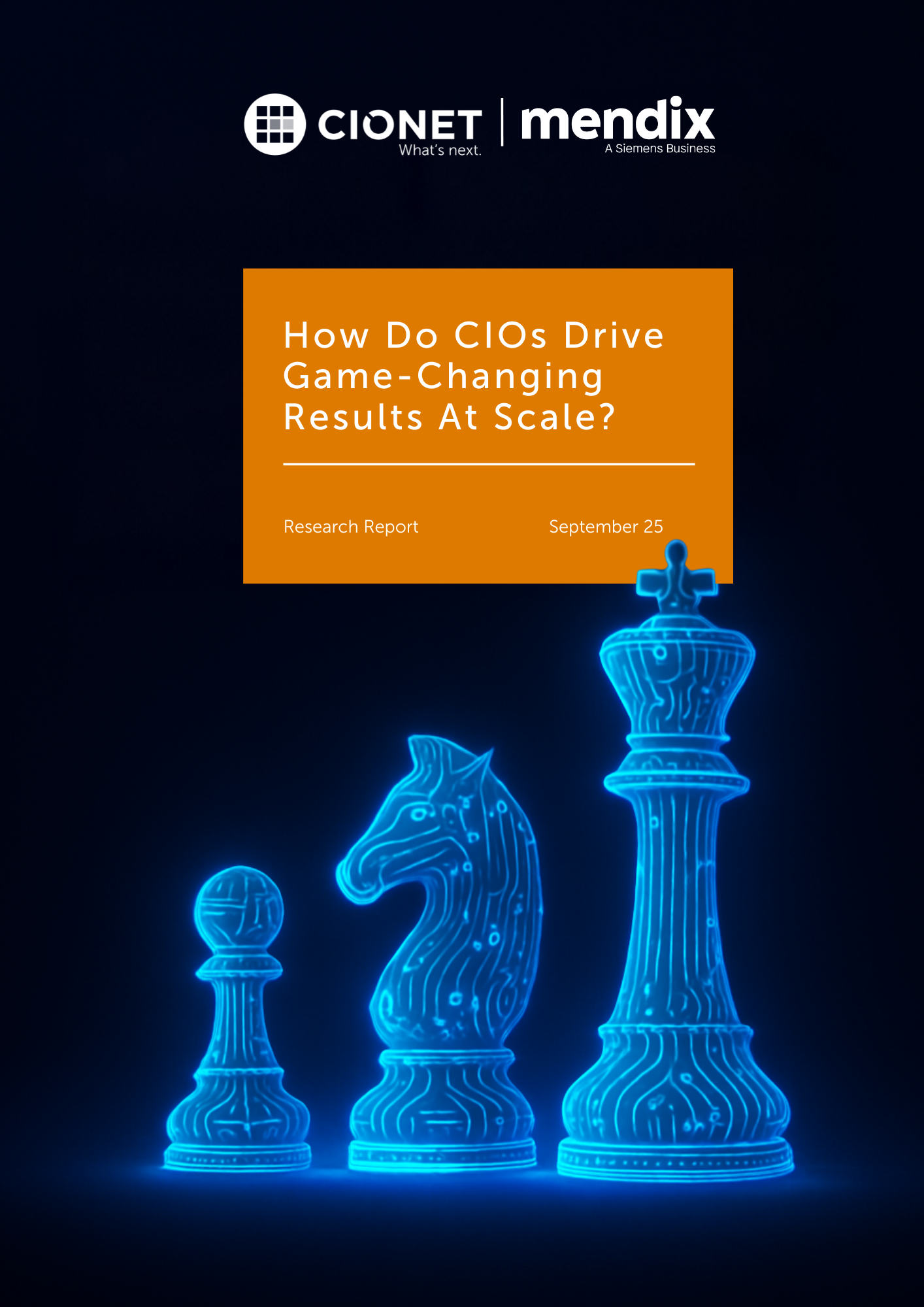
The role of the CIO has evolved from managing systems to shaping outcomes: growth, resilience, and competitive edge are now won or lost in the technology arena. Today ’ s CIOs must balance stability with innovation, control costs while attracting scarce talent, and modernise legacy infrastructure while adopting emerging technologies.

As AI transitions from a specialised tool to an all-pervasive force, understanding its profound implications for our human lives is no longer merely academic but an urgent imperative for social well-being and strategic preparedness.
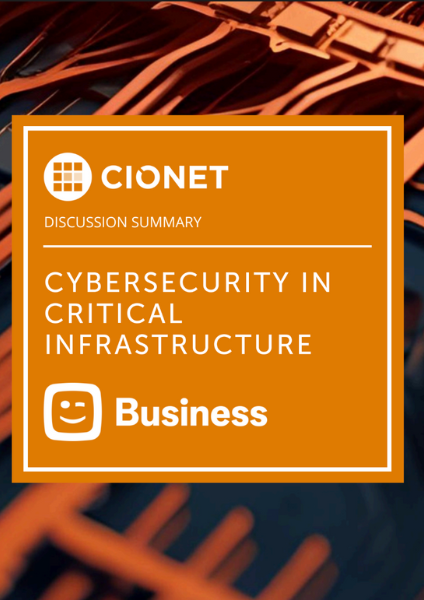
Geopolitical tensions have dominated the headlines for over two years now. In this context, the cyber threat landscape is also evolving rapidly. The protection and security of critical infrastructure – both physical and digital – is becoming increasingly important.
In our new app, our members connect with other digital leaders from around the world to find better solutions to their challenges.
Connect with digital leaders like you
Share ideas, best practices, and new resources
Experience inspiring and thought-provoking content and conversations you can’t find anywhere else
Make better, more well-informed decisions about the topics that are most important to you
.png?width=600&height=600&name=Anna%20Kopp%20(1).png)
Head of IT Germany and Regional Office Lead Munich, Microsoft
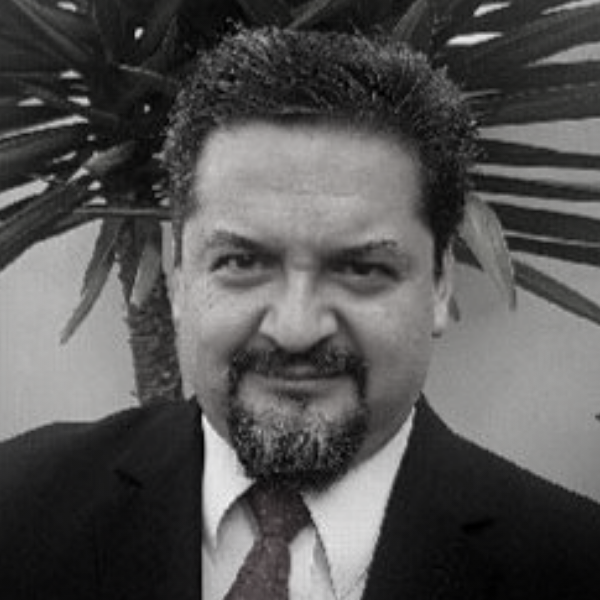
IT Director, IT Thinker

Vice president IT & Compliance, VisionaryRCM (A Carlyle Grp Company)
CIONET’s mission is to help IT executives become more at ease and above all more successful in their jobs. So they can do more than just keep up with change but ultimately define it. CIONET opens up a whole new universe of opportunities in IT management.
With the largest membership of corporate digital leaders across Europe, Latin America, US and Australia, CIONET has the expertise and pioneering vision to solve or address any IT management challenge.
From our local and global events, from our publications and research to our executive education programmes, everything we do is aimed at making sure digital leaders maximise their potential.
with digital leaders who share your interests, who face the same challenges, who care about the same topics.
stories, experiences, and ideas around our shared mission.
from our exclusive events, publications and research.
inspiration, thought-provoking conversations, expert perspectives and exclusive first-hand content each and every day
and make better, more well-informed decisions on how to lead your digital business.
your potential. Realise your ambitions.
You can either send us a registered handwritten letter explaining why you'd like to become a member or you can simply talk to us right here!
Would you like to know more about CIONET, membership or partnership opportunities? Do you have feedback or any other question? Send us a message!